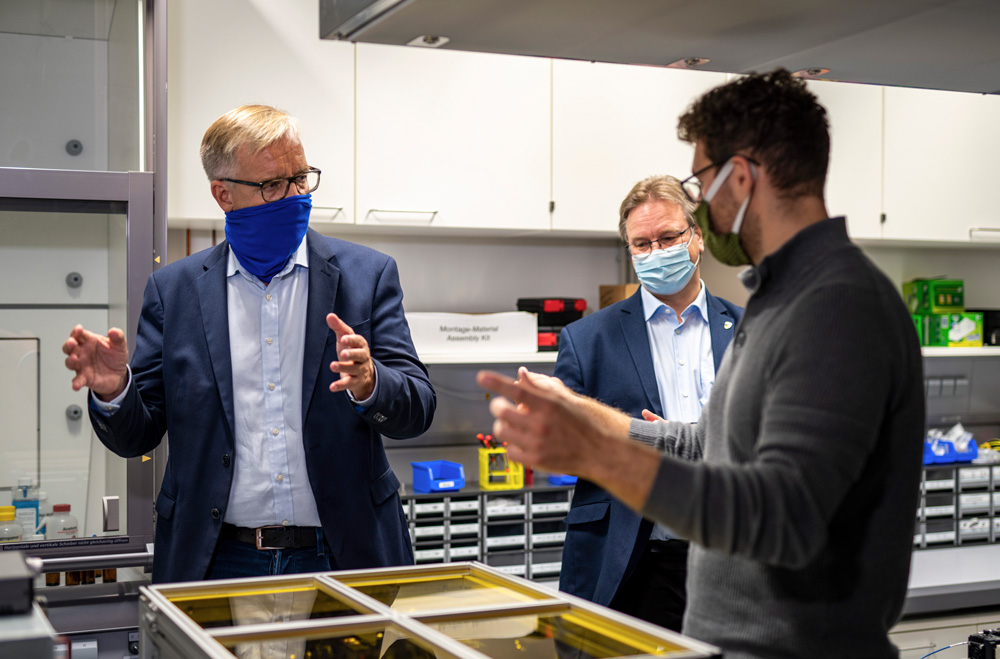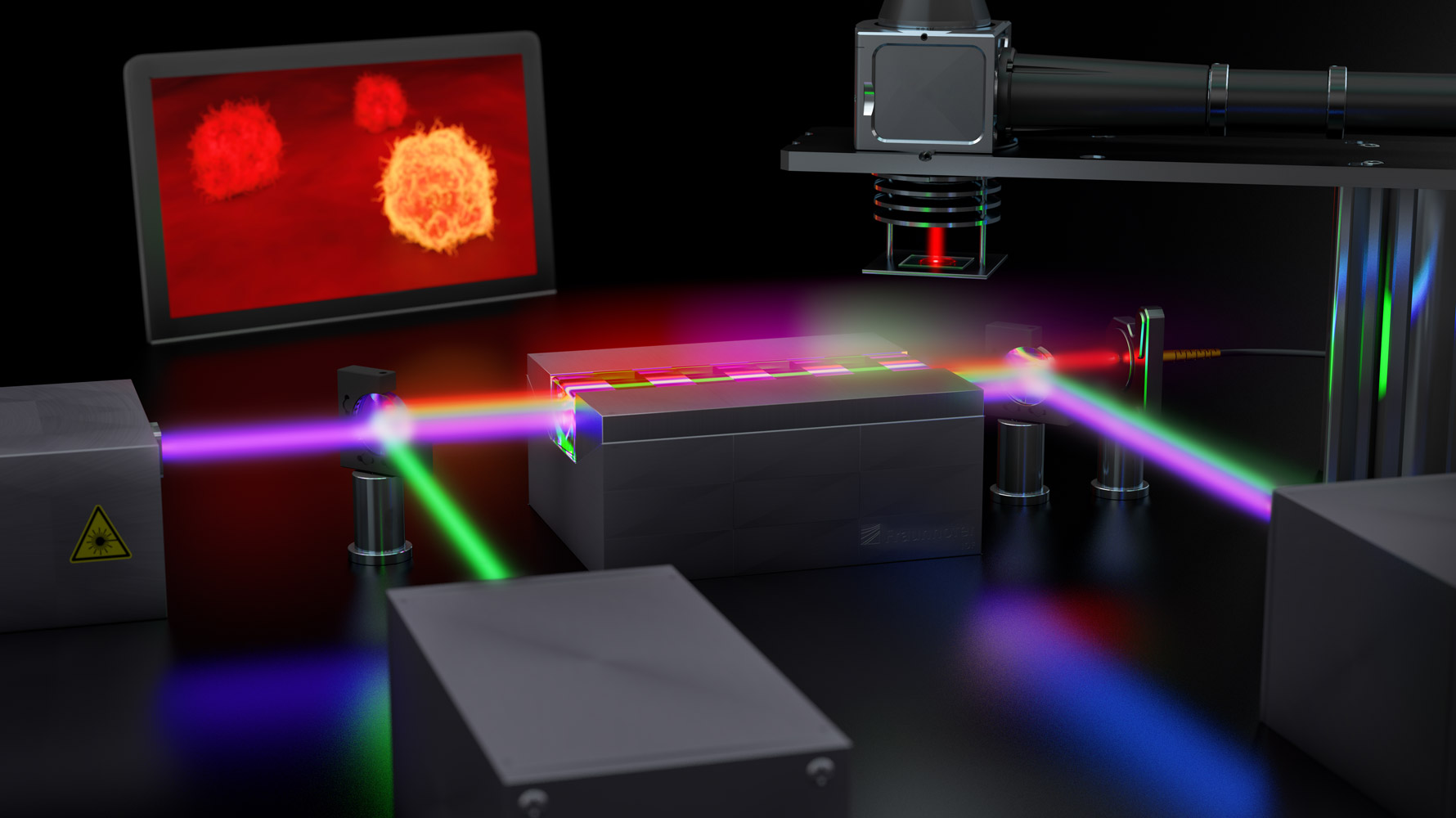Dietmar Bartsch, Chairman of the parliamentary group DIE LINKE, as well as Member of the German Parliament Ralph Lenkert and Member of the State Parliament Gudrun Lukin visited the Fraunhofer Institute for Applied Optics and Precision Engineering IOF in Jena on October 20, 2020. Among other things, the politicians visited two quantum laboratories and informed themselves about forward-looking projects in the field of quantum research.
Chairman of the parliamentary group DIE LINKE visits quantum laboratories at Fraunhofer IOF
Current research on quantum imaging and communication
Quantum technology is one of the most visionary fields in optical science. Whether in medicine, biology or communication - quantum technologies are opening new doors in research, science and industrial applications in many places.
During their visit to Fraunhofer IOF, the LINKE members visited two laboratories for quantum imaging and communication. They learned about the fundamental principle of entanglement of two light particles to form a quantum object and the conceivable fields of application based on it.
Quantum optics with high potential also for medicine
If one makes use of the effect of the entanglement of photons, quantum optics allows, among other things, to make things visible that could not be represented by classical optical methods. In medicine, quantum optics can thus help in the analysis of biological samples, for example: Exposure to certain wavelengths can damage tissue samples - in the worst case, living organisms in the sample are completely killed. To prevent this, the sample can be analyzed using imaging quantum optics.
A single particle of light is converted into two interconnected particles via optical processes. Both light particles can have different wavelengths but share all the information captured by the particles. In this way, a tissue sample can be analyzed at a wavelength that is unproblematic for the sample, while the second light particle is read by a sensor, for example. This is how special information can be obtained from the sample that would have remained hidden to classical optics.
Quantum technology enables tap-proof communication
Optical quantum technology also has the potential to be used in communication. The guests were given an insight into the initiative "QuNET". The program, which is funded by the German Federal Ministry of Education and Research (BMBF), is dedicated to the research and utilization of quantum technology for the secure exchange of sensitive data.
Bartsch emphasizes the importance of the institute for upcoming future questions
In addition, the delegates informed themselves about recent spin-offs of the institute. They got to know "SpaceOptiX", a young Jena start-up that has started to manufacture high-precision optical components for use in space, astronomy and industry.
"I am thrilled about the know-how here on site and especially this connection to the absolute top challenges the world is currently facing", Bartsch commented on the visit to the institute. "It is madness what is happening here at an East German, a Thuringian, a Jena location. You can really be proud of that!"
Additional information on the functional principle of quantum imaging
Video with explanations on quantum imaging and how to make the invisible visible.

